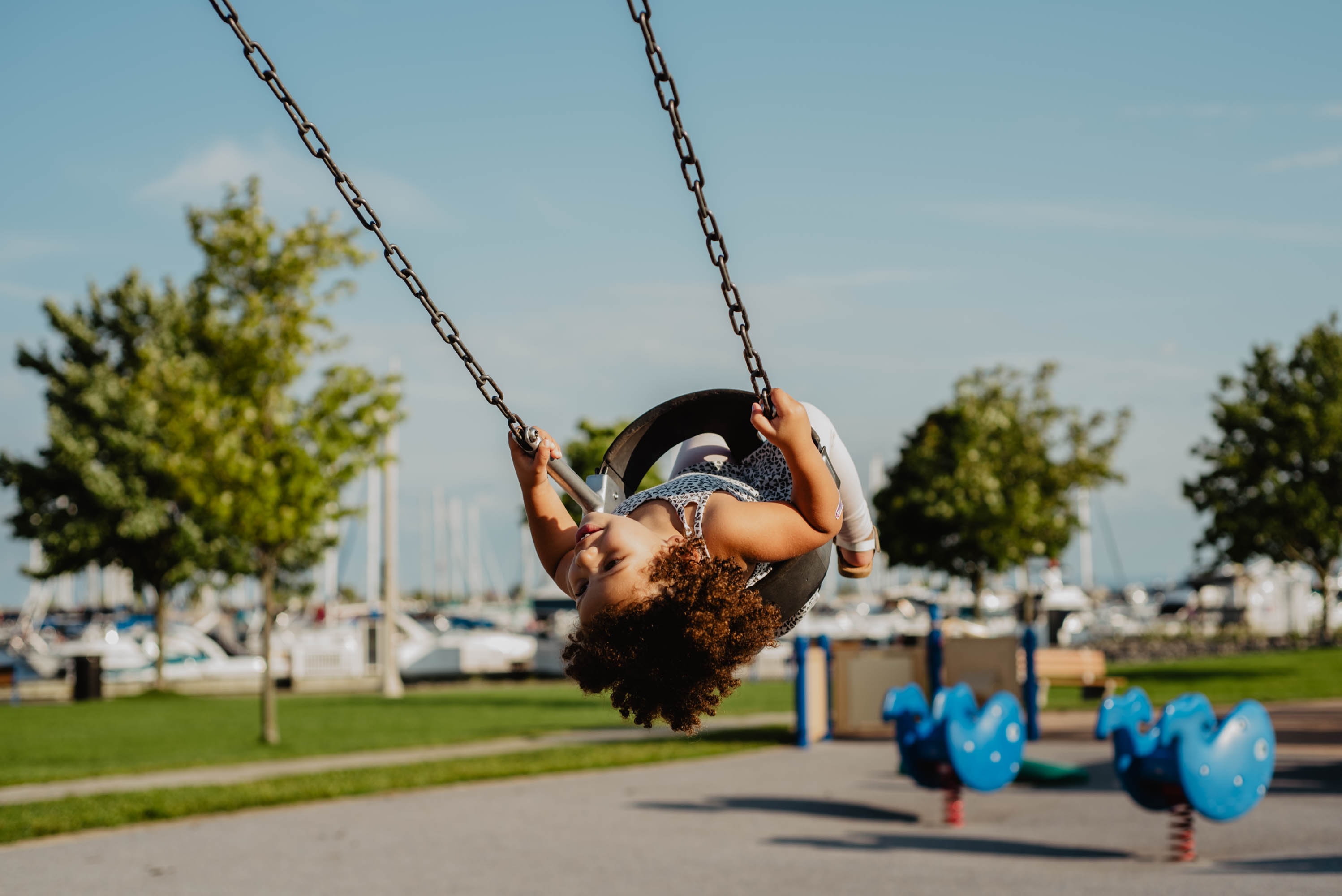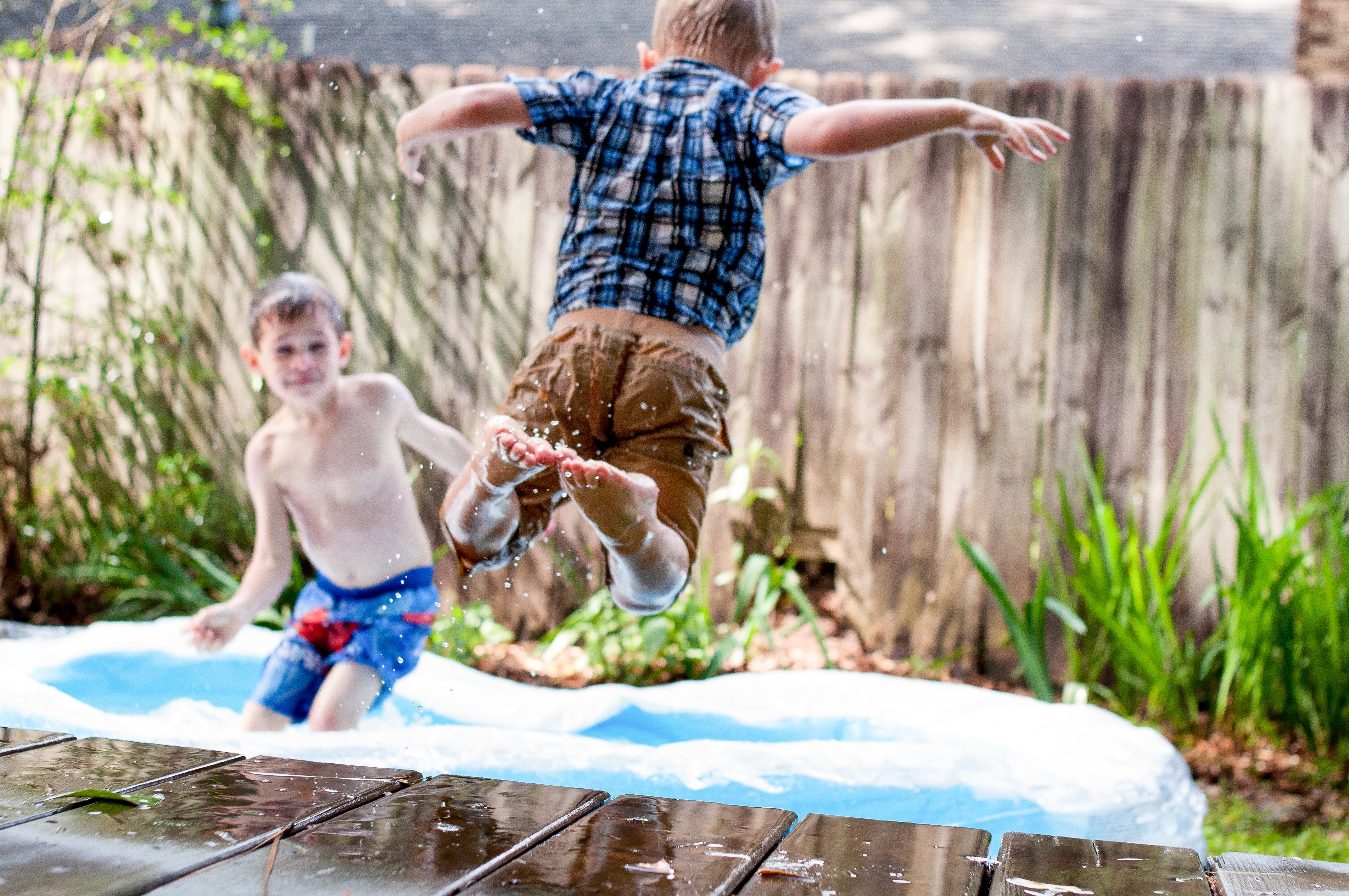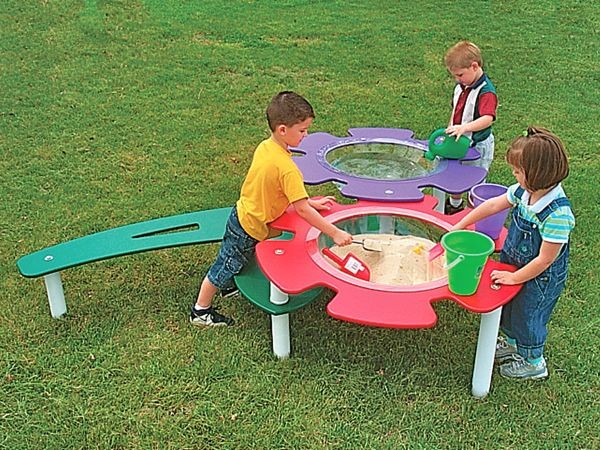 |
| In the same manner that your child is never too early to learn, your child is never too early to play. Photo by Olivia Bauso on Unsplash |
As if this is not enough to make you cringe, child centers for infants and toddlers have been modified to rouse very young minds to put their thinking caps as they forge an alliance with education without much regard to real flow of their uncontrollable emotions. Though these activities widen the horizon of infant, toddlers and school-aged kids in hopes of maximizing their development, the formative years of U.S. kids are rather highly prone to a sedentary lifestyle. Sedentary lifestyle, which is governed by these glossy competence-based learning plus poor eating habits, has resulted to 15% of kids aged 6 to 19 to suffer from the perils of obesity.
Compared to the 1960s, obesity statistics have increased by four times; while only 25% of kids played outdoors. More alarmingly, the U.S. has earned a worldwide reputation of being the largest consumers of medication for Attention Deficit Hyperactivity Disorder (ADHD). While academics is undoubtedly crucial in a child’s future, disregarding the simple yet very essential childhood experience has led the nation to more impeding problems affecting the nation and its future stance. We seem to have forgotten that productivity and competency are just sides of the multi-faceted world of children's development. Playgrounds in recreational areas like parks and zoos used to be their exploration spaces and venues, for kids to get fit physically, socially, emotionally and mentally. Sadly, free play or recreational play has been pushed at the farthest end of parenting tips for raising well-rounded children.
With all these concerns and staggering numbers, parents, teachers and caregivers are faced with the question: How do we get back in shape as we help our kids get fit?
Cost Cutting and Cutting Corners
Due to the number of cases that questioned playground safety and the costs that go with playtime in the recent years, playgrounds have lost their potency. 28% of schools, that need to cut on costs, have let go of recess. Surprisingly, affluent parents would rather pay $250 per hour to tutors, who would devote their energies to perfecting the ABC's and 1-2-3s of pre-school kids.
Of course, all parents would want to give the best to their kids, so they tend to give the best education they could get their hands on. However, a study conducted by Denise Pope revealed the academic achievement in elementary school is NOT related to downing mountains of homework. Moreover, kids who sink and swim with homework experience a multitude of stress that manifests in hampering them physically -ulcers, migraines, lack of sleep and unusual burnout and yoyo-ing weight.
National Recreation and Park Association (NRCPA) revealed that children spend more than seven hours living a sedentary lifestyle. This pretty much encompasses all the uneventful physical conditions of kids, not to mention, the lost time that is supposed to be given to reward themselves after a long school day, and the chance to meet old and new friends that go beyond likes, comments, and shares.
With these findings, isn't play time worth a good try? Perhaps, it's about time put down the books or turn off the screens in exchange for real time experiences to get kids better and wiser, too. Recreation must no longer be seen as a waste of time. A trip to the zoo is a good way to get in touch with senses, in the same manner that a park visit is a precious opportunity to get to know how soil feels, smells, and at times, tastes. An hour or two spent in playgrounds for toddlers, instead of tutoring, not only saves you $250, rather it is a good way to learn new things in a different view, on a different landscape. Burning the insatiable energy of toddlers is best downed in playgrounds, too. As these young children get fit, they even get to deal with their tantrums on their own. This would take more than one playground visit though, so as a tip, be the cheerleader parent that you are and just let loose as you gradually let your child discover and uncover life's little yet colossal lessons while at play.
Hard Falls, Harsh Calls
Playground accidents have seemingly pushed parents, teachers and caregivers to playgrounds as bloody grounds. Then again, new playground facilities have been designed, installed and maintained to foster fun and safe play in one. With the regulations and guidelines for play set safety, kids of all ages can now enjoy and explore heights they are to conquer, temper shakes and falls and calculate risks. Playground equipment are now centered on helping kids get fit without forcing it down their tiny throats. Tapping the idea of fun and safe play is no longer equated to a boring and very constricted routine.
 |
| Residential spaces must be communal spaces. Photo by Brandon Morgan on Unsplash |
Similarly, accessible playgrounds for handicapped children have paved the way to empower them through manageable and unstructured inclusion. The rise of kids with autism is also something that must be addressed by parents, teachers and caregivers. This issue could translate to fostering more and more facilities and in all hopes, would make these kids productive members of the society. Simply put, familiarity and affinity to recreational spaces like commercial playgrounds would definitely make children with special need more adaptable, and more informed. Inclusion coupled with free play also bridges the gap between kids who are yet to see kids that are differently able. With it, empathy and acceptance are also ingrained in the system of children as they get a good time.
Recreation: Action and Interaction
National Recreation and Park Association (NRCPA) expressed the worrisome condition children are now facing as they forego the idea of exploring the possibilities that can never be found while sitting down and burying themselves in academics and screens. Discovering the outdoors through recreational playgrounds ought to be tapped again, not only because it’s a tried-and-tested learning method. More importantly, play spaces that are housed in recreational areas like the zoo and parks may help solve the rising and saddening cases of child obesity while developing interaction of kids and parents in an otherwise highly disconnected community.
Playground recreation not only helps kids get physically fit. NRCPA envisions a generation who are wired to get back to be environmental stewards. Logically, kids would not authentically care for a green space if they have not experienced the thrill of being able to explore a real green space. In the same manner, kids would not be able to relish the power of taking breaks through recess if we rob them of that little time.
 |
| Accessible is a venue for all. |
One Fine and Final Plea
Advocating free play and recreational play are not attacks to the current educational systems, instead we are all for striking a balance between what really matters to the arena of child’s development –fostering a happy and well-versed generation through honing the mind, the body, and the emotive sphere. Play sets that allow recreational activities tap the power of kids while they let their imaginations run free as compared to the very stringent, very calculating measuring sticks from their stress-laden lifestyle that revolves mostly around bringing home a high grade or yet another recognition.
It's about time to get back on track. It's about time to give your children the best play pack. It's about time to get back to the basic and be prepared to discover play and learning that's simply fantastic.

